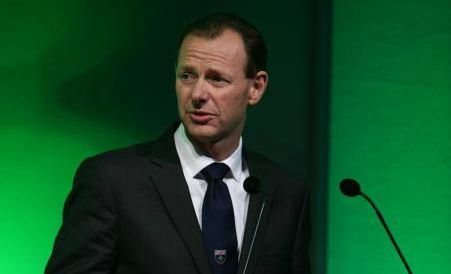Startup entrepeneurs take note. London Business School’s Entrepreneurship expert Dr John Mullins, has warned about the pitfalls that await misguided Start-ups that focus on the sole pursue of venture capital for funding. The analysis he generated shows “Today’s idea that a business idea plus venture capital equals instant riches might be misguided. While many start-ups overlook it, the customer is still king and in more ways than one”, says the Associate Professor of Management Practice in Marketing and Entrepreneurship and author of The New Business Road Test – What entrepreneurs and executives should do BEFORE launching a lean start-up.
“Getting cash from customers to support a business is extremely helpful”. He said, and added that doing so helps eliminate the need for time-consuming tasks of attracting investment dollars which he says: “are hard to come by these days and investors often want control in exchange for their financial support which doesn’t always align with the founders’ vision for the company or their customers’ interests”.
David Skok is a five time serial entrepreneur turned VC, at Matrix Partners. Commenting in a forentrepreneurs.com post, on “why startups fail”, he says:
“I realized that one of the most common causes of failure in the startup world is that entrepreneurs are too optimistic about how easy it will be to acquire customers. They assume that because they will build an interesting web site, product, or service, that customers will beat a path to their door. That may happen with the first few customers, but after that, it rapidly becomes an expensive task to attract and win customers, and in many cases the cost of acquiring the customer (CAC) is actually higher than the lifetime value of that customer(LTV)”.
So knowing where your potential customers are going to come from is critical. By integrating the customer from the very start of an entrepreneurial undertaking, can help flesh out strategy and plan best practises to pave the way for business growth in the future. Dr Mullins has identified five customer-funded business models, you can incorporate in your strategy:
1. Pay-in-advance models: the customer pays for some part of the good or service to the supplier before receiving it (Cotsco, Via, Threadless).
2. Service-to-product models: cater a service for customers individually by developing a product from scratch, allowing the manufacturer to retain raw material for developing products later (MapmyIndia, GoViral)
3. Matchmaker models: Matchmaking sellers and buyers. Commissions or fees gained from customers makes cash available to launch businesses (Airbnb, Dog Vacay).
4. Scarcity-based models: empowered by scarcity principle of a good or service the customer should buy now and pay now. (Vente-privee, Gilt Groupe, Zara)
5. Subscription models: This models grants a steady income with new customers turning profitable almost immediately (TutorVisa, Yammer)
Image compliments of Masters in Business Degrees

Hayden Richards is Contributor of IntelligentHQ. He specialises in finance, trading, investment, and technology, with expertise in both buy-side, sell-side. Contributing and advising various global corporations, Hayden is a thought leader, researching on global regulatory subjects, digital, social media strategies and new trends for Businesses, Capital Markets and Financial Services.
Aside from the articles, interviews and content he writes for IntelligentHQ, Hayden is also a content curator for capital markets, analytic platforms and business industry emerging trends. An avid new media explorer Hayden is driven by a passion for business development, innovation, social business, Tech Trading, payments and eCommerce. A native Trinidadian, Hayden is also a veteran, having served with the Royal Air Force Reserves for the past 10 years.
Follow Hayden on Twitter @HaydenARichards, linkedin.com/haydenhrichards and http://www.scoop.it/u/hayden-richards





























